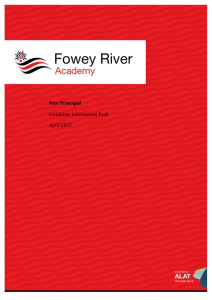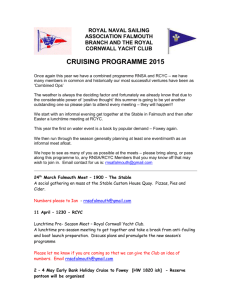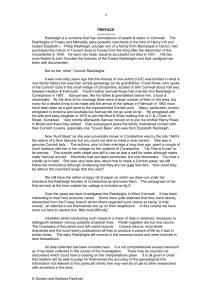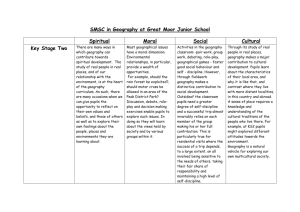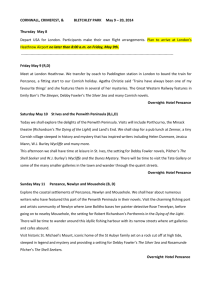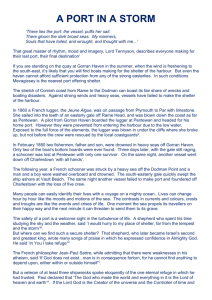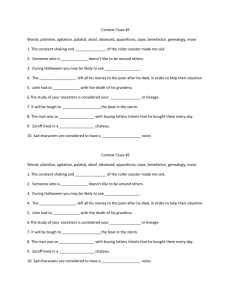The River Fowey is one of the largest river catchments in South
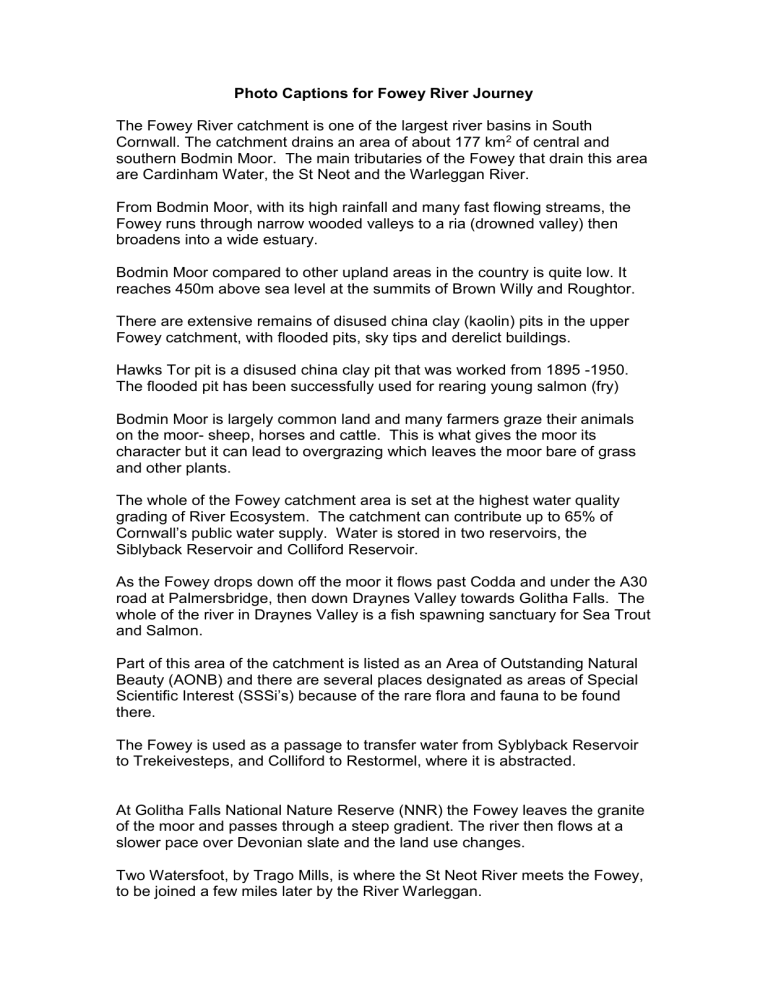
Photo Captions for Fowey River Journey
The Fowey River catchment is one of the largest river basins in South
Cornwall. The catchment drains an area of about 177 km 2 of central and southern Bodmin Moor. The main tributaries of the Fowey that drain this area are Cardinham Water, the St Neot and the Warleggan River.
From Bodmin Moor, with its high rainfall and many fast flowing streams, the
Fowey runs through narrow wooded valleys to a ria (drowned valley) then broadens into a wide estuary.
Bodmin Moor compared to other upland areas in the country is quite low. It reaches 450m above sea level at the summits of Brown Willy and Roughtor.
There are extensive remains of disused china clay (kaolin) pits in the upper
Fowey catchment, with flooded pits, sky tips and derelict buildings.
Hawks Tor pit is a disused china clay pit that was worked from 1895 -1950.
The flooded pit has been successfully used for rearing young salmon (fry)
Bodmin Moor is largely common land and many farmers graze their animals on the moor- sheep, horses and cattle. This is what gives the moor its character but it can lead to overgrazing which leaves the moor bare of grass and other plants.
The whole of the Fowey catchment area is set at the highest water quality grading of River Ecosystem. The catchment can contribute up to 65% of
Cornwall’s public water supply. Water is stored in two reservoirs, the
Siblyback Reservoir and Colliford Reservoir.
As the Fowey drops down off the moor it flows past Codda and under the A30 road at Palmersbridge, then down Draynes Valley towards Golitha Falls. The whole of the river in Draynes Valley is a fish spawning sanctuary for Sea Trout and Salmon.
Part of this area of the catchment is listed as an Area of Outstanding Natural
Beauty (AONB) and there are several places designated as areas of Special
Scientific Interest (SSSi’s) because of the rare flora and fauna to be found there.
The Fowey is used as a passage to transfer water from Syblyback Reservoir to Trekeivesteps, and Colliford to Restormel, where it is abstracted.
At Golitha Falls National Nature Reserve (NNR) the Fowey leaves the granite of the moor and passes through a steep gradient. The river then flows at a slower pace over Devonian slate and the land use changes.
Two Watersfoot, by Trago Mills, is where the St Neot River meets the Fowey, to be joined a few miles later by the River Warleggan.
The river is much bigger now and curves gently southwards past Bodmin Park
Station and Lanhydrock House.
Restormel Castle overlooks the River Fowey
As the river approaches Lostwithiel it becomes intertidal. Lostwithiel is about
35km away from where the Fowey rises on Bodmin Moor.
Lotwithiel is small stannary (tin mining) town. It is an ancient commercial market and was first settled in Roman times. Lostwithiel was recorded in the
Doomsday Book and in the 13 th and 14 th centuries it was the capital of
Cornwall and its most important port.
A photograph circa 1915 of the river Fowey below Lostwithiel’s ancient bridge.
The basin and landing place has changed little except that more small boats used to pass to and fro between Lostwithiel and Fowey in those days. The river was still used for commercial transport until the 1930’s.
The Mediaeval Bridge at Lostwithiel is the upstream limit for navigation. Large deposits of gravel are present below the bridge due to erosion processes much higher up in the catchment.
The river enters Coulson’s Park downstream of the Railway Bridge, a popular area for recreational walking and angling. Peal Pool at the lower end of the
Park is one of the best holding pools for Salmon and Sea Trout on the tidal
Fowey.
At the lower end of Shirehall Moor, salt marsh, saltpans, creeks and intertidal mudflats dominate the scene. A real mix of fish species can be found with
Salmon, Sea Trout, Bass, Flounder and Mullet being present at certain stages of the tide.
The river broadens as it is joined by the River Lerryn and further down Penpoll
Creek and Pont Pill creek. At the mouth of the river as it opens to the sea is the town of Fowey.
Fowey has a deep water port and is a famous sailing and holiday resort. A ferry crosses the river from Fowey to Polruan on the other side of the estuary and ships sail in and out of the famous harbour.
![Kentisbeare to Padstow - A Theory [of Butson migration]](http://s3.studylib.net/store/data/007532038_2-dcbef7dc337c2b51e29f57437d1bfd88-300x300.png)
